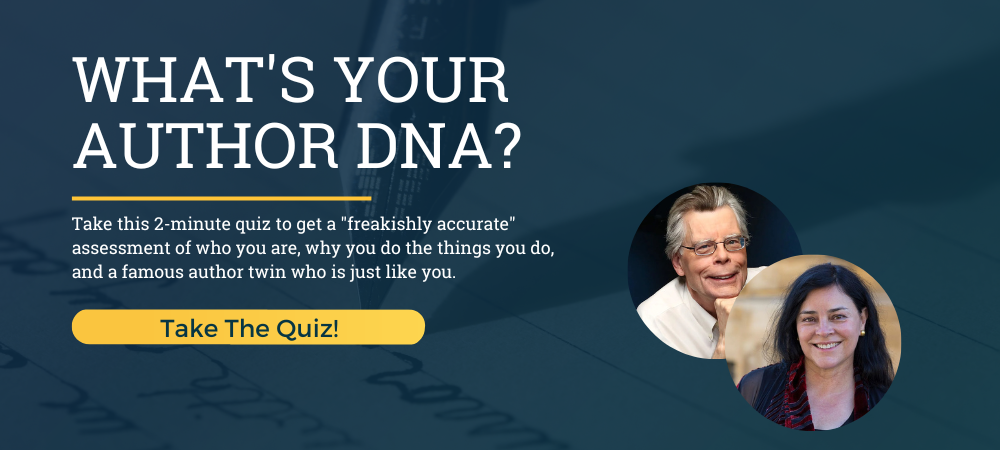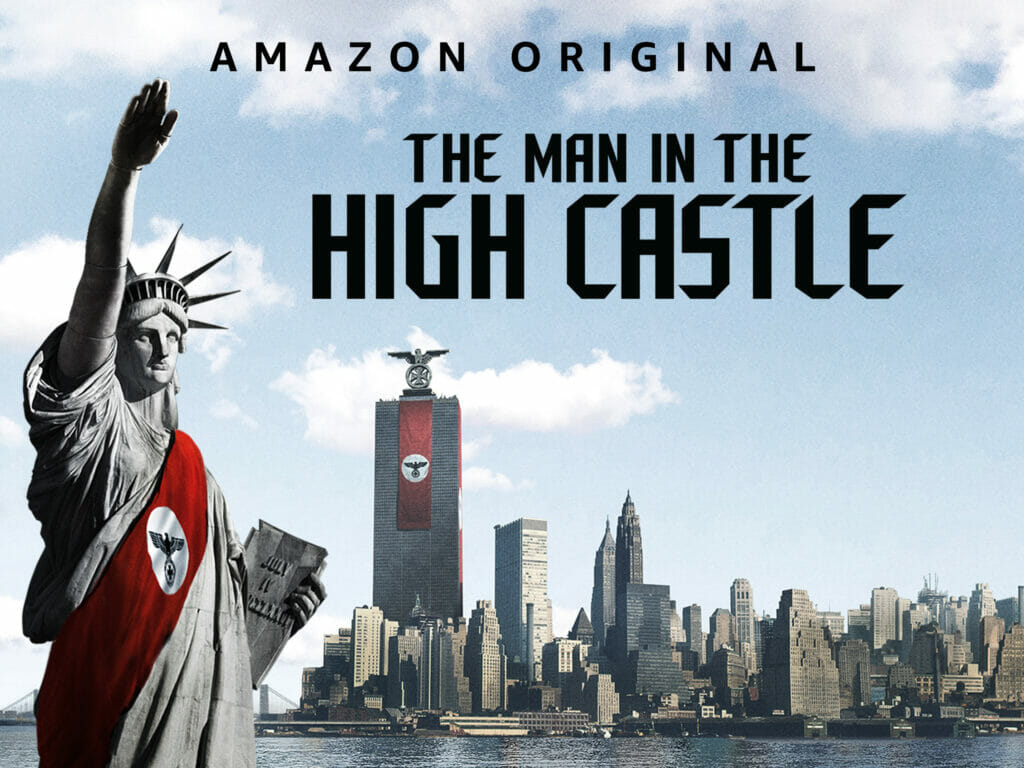There’s a space between historical fiction and dystopian literature that’s often unaccounted for, but increasing in popularity nowadays, and it’s called alternate history fiction.
If you’re someone who finds the confines of writing in historical fiction to be stifling to your creative process, but still like the idea of using historical events within your story, you may be a writer of alternate history fiction, which is a genre that’s been growing for a while now.
To help you figure out precisely what this is and how to write your novel so it adheres to this obscure genre, I’ve put together some help.
Here you’ll learn what is alternate history fiction, along with much more:
- What is alternate history fiction?
- Tropes in alternate history fiction
- Examples of alternate history fiction
- How to Start Writing it

What is Alternate History Fiction?
Alternate history fiction poses the question and shares the story of a different outcome of a true historical event. You can think of it as a story conceptualized based on the “what if” of a situation from history. For example, a popular one might be, “What if the Germans won WWII?”
As it is, there’s a very popular show based on this very idea called The Man in the High Castle based on the book by Philip K. Dick.
Here are other potential alternate history prompts for examples:
- What if the nuclear bomb was never invented
- What if some other country created the nuclear bomb earlier and before the United States
- What if Russia won the race to the moon (this is also a show called For All Mankind)
- What if the Titanic never sank
- What if the confederacy won the civil war
- What if the United States never fought in Vietnam
- What if Atlantis was never lost
These questions can drum up ideas about various alternate histories you can use for stories.

11 Tropes in Alternate History Fiction to Use in Yours
Tropes help an author shape and guide their plots and characters. If you’re not sure what a trope is, it’s a common situation or plot occurrence in fiction that readers have come to know and love. It’s different from a cliché because it’s something readers like and even choose their books based on.
You can use some of them in your alternate history fiction as well. Here are some popular ones:
- Ancient aliens causing or contributing to historical events
- Dinosaurs are never extinct
- Wars are won by the opposite side
- Technology is created or not created earlier in time
- Area 51 knowledge is released (or not kept hidden in the first place)
- Atlantis, the lost city, is found or was never hidden
- Lincoln and Kennedy were never assassinated
- Alternate president won a close race
- Supernatural or magic forces mingle with history
- One world order
- Meteor (that missed Earth in real life) hits a part of the world
Famous Examples of Alternate History Fiction
The best way to learn how to do alternate historical fiction well is to simply read it. These are just some of the examples, but you can always browse the category on Amazon for more.
- “Fatherland” by Robert Harris: Set in a world where Nazi Germany won World War II and now controls Europe.
- “The Plot Against America” by Philip Roth: Envisions an alternate history where aviation legend Charles Lindbergh becomes President of the United States and aligns with Nazi Germany.
- “The Man in the High Castle” by Philip K. Dick: Depicts a world where the Axis Powers won World War II and have divided the United States into Japanese and German-controlled zones.
- “The Yiddish Policemen’s Union” by Michael Chabon: Takes place in an alternate history where a temporary Jewish settlement was established in Alaska after World War II.
- “Fatherland” by Robert Conroy: Presents an alternate history where Japan invaded the West Coast of the United States during World War II.
- “The Guns of the South” by Harry Turtledove: Imagines a world where time-traveling South African white supremacists supply the Confederacy with AK-47s during the American Civil War.
- “Dominion” by C.J. Sansom: Set in a world where the United Kingdom made peace with Nazi Germany in 1940, leading to a fascist-controlled Britain.
- “The Peshawar Lancers” by S.M. Stirling: Envisions a world where a catastrophic meteor impact in the late 19th century forces the British Empire to relocate its capital to India.
- “Fatherland” by Nina Bunjevac: A graphic novel that explores an alternate history where Yugoslavia remains intact and the Cold War takes a different turn.
- “The Mirage” by Matt Ruff: Portrays an alternate world where the United Arab States are the global superpower, and the United States is a collection of fractured states.
- “The Confederate States of America: What Might Have Been” edited by Gregory Benford and Martin H. Greenberg: An anthology of short stories exploring various scenarios if the Confederacy had won the American Civil War.
- “The Man with the Iron Heart” by Harry Turtledove: Examines a world where Reinhard Heydrich survived his assassination and leads a resistance movement against the Allied occupation of Germany after World War II.
How to Get Started Writing Alternate History Fiction
Much like any genre-specific book, there are certain steps you want to make sure you follow in order to write an alternate history fiction novel well. Here’s our short guide to get it right?
1. Decide which historical event to use
There are many to choose from. And while it’s tempting to focus only on the United States’ history or even recent events occurring over the last 200 years, I’d encourage you to challenge yourself. Go back further in history. Two thousand or even more years ago and choose an event. What would the world look like if the Roman Empire hadn’t defeated the Egyptian Dynasty back in 30 B.C.? Would the Roman ideologies be present today? How would the Egyptian beliefs mature into our current world?
2. Determine what specifically will be changed
Above is a specific example of what changed; the Egyptian Dynasty won instead of being defeated by the Roman Empire. It could have been different than this one alone. What you want to focus on is choosing a historical event and going with a unique angle on it. Perhaps even the Egyptians didn’t win. Maybe both empires collapsed after a war that took too long, and neither people or culture lasted. What would then take its place? It’s always best to take the unique, unexpected approach here.
3. Choose your subgenre (magic, science fiction, or none)
A true alternate history fiction book is one that’s rooted in the real world, just with a change of events. That said, you can take this story a step further by crafting parallel universes, adding time travel, or other elements you can use to further reach your intended audience. The Man in the High Castle is a good example of bringing in something else—the ability to travel to the parallel world in which the Germans lost—that makes it more than just alternate history fiction.
4. World build based on the change
The customs and operation of military forces in the United States could be entirely different if a country other than the U.S. created the atomic bomb first. How would the U.S.’s response look, and how would that shape who gets to be in the military, the roles of the characters in your story, and how the culture would change as a result? Think big! You never know how much could actually change from one small detail. For example, in For All Mankind, women get more access to be in science and in NASA much earlier due to the culture shift, thereby changing women’s roles during this time.
5. Brainstorm the plot conflicts
What issues could arise in a world of this nature? If you think about The Man in the High Castle, the conflict is fairly clear. Germany won the war and took their ideologies to the United States, creating the same dangers here as it did in Europe during this time. Get creative here, and take the entire world and culture into consideration. Don’t go with the most obvious challenge. This is why this step is after worldbuilding.
6. Create your characters
Character development can be pretty tough, but there are plenty of guides and blog posts to help. What you most want to focus on is how you can build a character that will find conflict with your plot. Don’t just plan a character who would fit in the best. Plan one that would actually be the worst match for the plot they’re about to go on. This is more interesting and makes for more potential conflict (which is what readers want because conflict = entertainment).
7. Think about the tropes to use
There are a few above for you to choose from, but here’s a more comprehensive list for alternate history fiction. Remember that tropes are a good thing, if you don’t make them too clichéd! Combining these with your unique character will help significantly.
8. Start crafting your five milestones
If you’re writing a novel, there are certain points you want to hit in your story. While you can always vary outside these points, they should be used as a guide because they’ve been crafted the necessities of a quality story. You can learn more about that by signing up for the class below:
